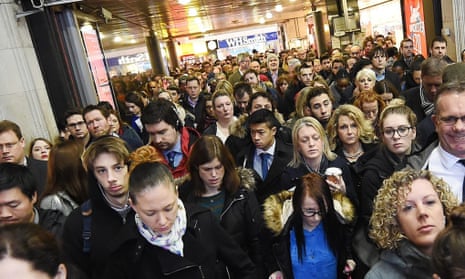The income of female workers across the world will lag behind men’s for another 70 years if the gender pay gap continues to reduce at the present painfully slow rate, the UN is warning in a report that lays bare global inequality in the workplace.
More than half a century after the United States passed the Equal Pay Act, and 45 years after similar legislation in the UK, women across the world earn 77% of the amount paid to men, a figure that has improved by only three percentage points in the past 20 years, according to a report from the UN’s International Labour Organization (pdf) (ILO).
Over and above the pay gap, women face a “motherhood pay gap”. Women with children can expect to earn less when they return to work than childless women, with the difference increasing for every child they have, according to an ILO analysis.
The report, released ahead of International Women’s Day on Sunday, also shows that the gender gap in work participation has barely shifted in two decades. Since the Beijing Declaration on women’s rights was signed by 189 governments in 1995, the difference in men’s and women’s labour market participation rates has dropped by only 1%. Today 50% of the world’s women work, compared with 77% of men. In 1996, the figures were 52% and 80% respectively.
“The overriding conclusion 20 years on from Beijing is that, despite marginal progress, we have years, even decades, to go until women enjoy the same rights and benefits as men at work,” said Shauna Olney, chief of the gender, equality and Diversity branch of the ILO.
The report cites an 11-country analysis carried out in 2005 showing that women with two children in the UK can expect to earn 25% less than a childless woman. The gap was less than 10% in Belgium, the Netherlands, Ireland, Spain and Portugal. In France, Italy and Denmark, women with two children could expect to earn slightly more than their childless counterparts. British women are particularly badly hit, according to the authors, because the “welfare state of the UK emphasises individual freedom and provisions of daycare and after-school facilities enabling mothers to work full-time are lacking”.
Women who start families before the age of 25 “suffer a larger wage penalty”, while in general – and perhaps not surprisingly – the longer the period of time away from work, the larger the hit, according to the ILO.
But the report found that government policies also had a significant effect. A 2009 study by Pettit and Hook, for example, found women in the US were penalised for even short periods out of the labour market while, in Sweden, women only had a drop in wages if they took more than the normal 15 months of statutory paid leave.
Fathers, on the other hand, are likely to earn more than childless men, according to ILO – an influential 2010 report from the University of Massachusetts that it cites found fathers in the US earn 11% more than non-fathers.
Mothers were more likely to have career breaks, switch to part-time work, choose jobs that help to reconcile work and family – which are usually lower paying – and miss out on promotions, said Kristen Sobeck, an economist at the ILO. But lower pay for mothers was also linked to other factors such as discrimination and undervaluation of women’s work, as well as government policies on parental leave, labour rights and childcare. Asked if the gender pay gap was inevitable, she said: “I think a gender pay gap will persist insofar as societies and policies shift care responsibilities disproportionately to women.”
There has been some progress according to the ILO. The percentage of countries offering some form of maternity leave has increased from 38% in 1995 to 51% today – although 41% of all women don’t have “adequate protection”.
States are also increasingly giving men paternity leave – up from 28% two decades ago to 56% today. But the ILO says that, while men are “beginning to take on more care responsibilities”, women still shoulder the majority of the burden. In the EU, women spend 26 hours per week on care and home activities, compared with nine hours for men.
Naomi Wolf, a consultant at the Athena Center for Leadership Studies, said: “Sexism in the workplace pumps untold revenue into the coffers of global business ... this situation will never yield to reasoned appeals, too much money is at stake. It is past time for women to organise both as a movement in the labour force and as a political powerhouse to close this nightmarish gap in fairness and equality.”
Other facts are bleaker still: according to the ILO, a third of all women are “victims of physical and/or sexual violence that affects their attendance at work”. According to the latest figures from the World Bank, 700m women are victims of either physical or sexual violence – in the Middle East and Africa, 40% are victims, in south east Asia the figure is 43%.
Asked whether working women were better off than they were 20 years ago, Guy Ryder, the ILO’s director general, gave a qualified yes. “Has this progress met our expectations? The answer is decidedly no,” he added. “We need to be innovative, to reframe the debate and to intensify the focus on ensuring the rights of women at work, and promoting gender equality and women’s economic empowerment.”

Comments (…)
Sign in or create your Guardian account to join the discussion